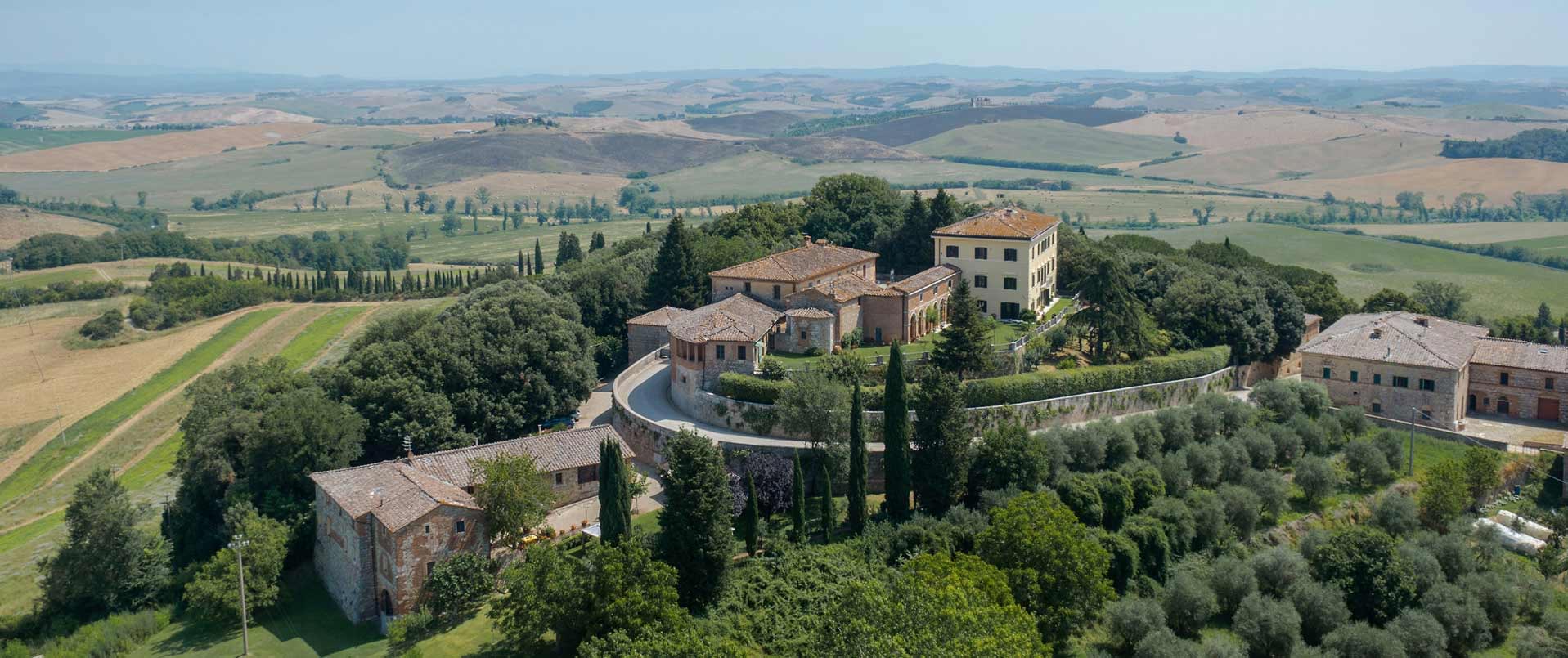
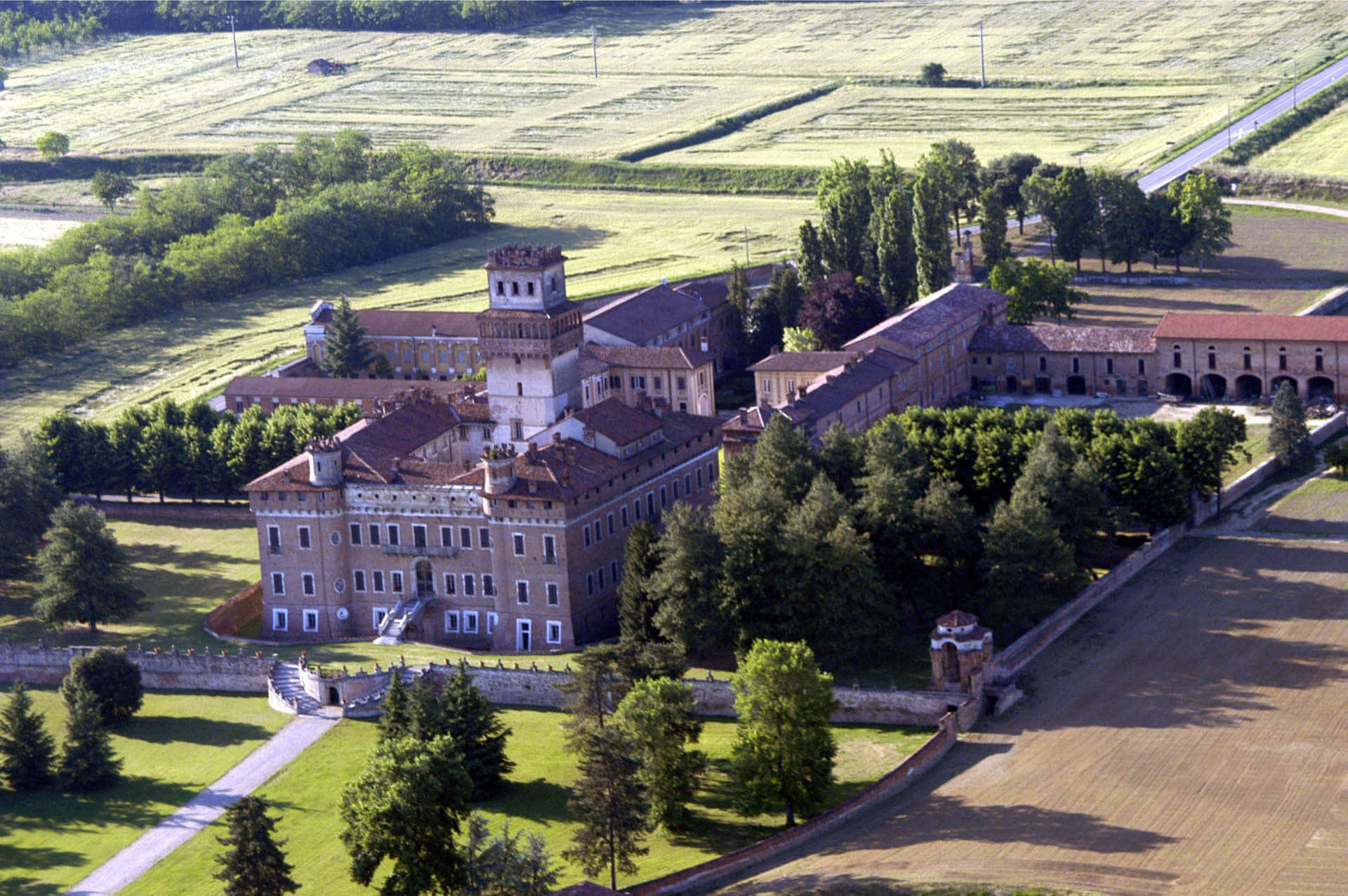
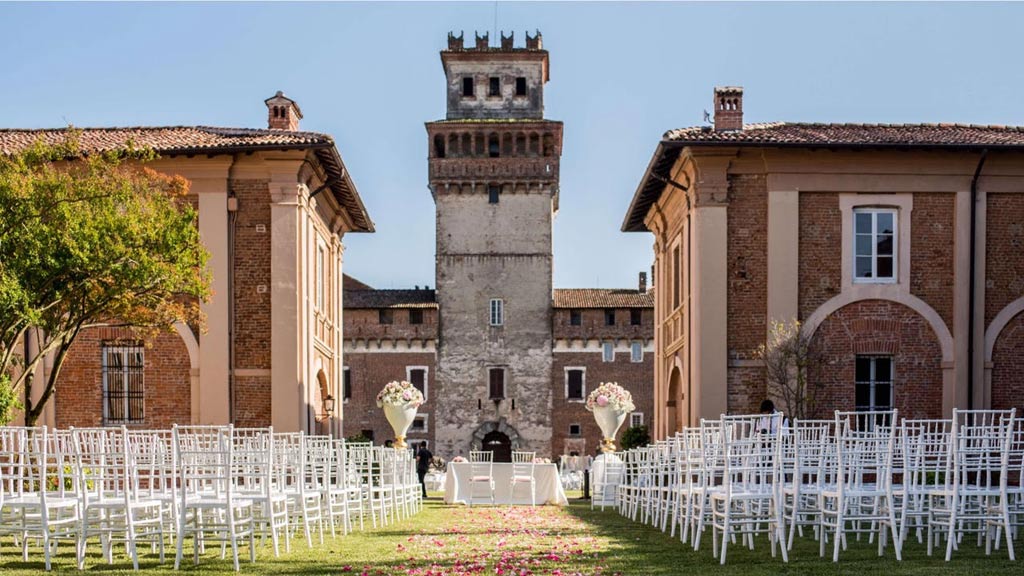
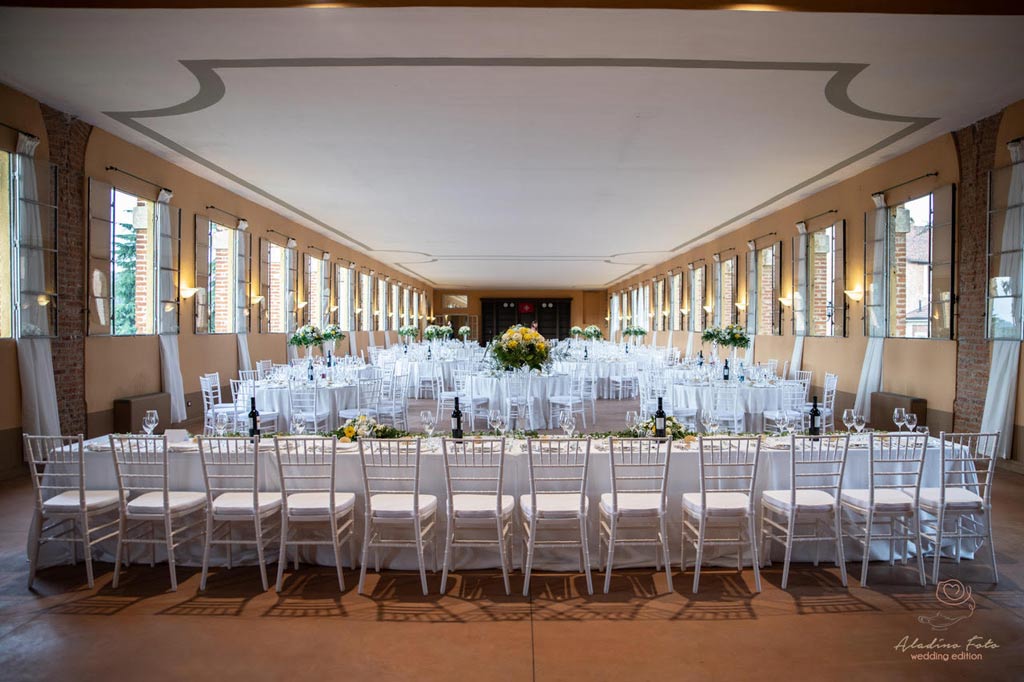
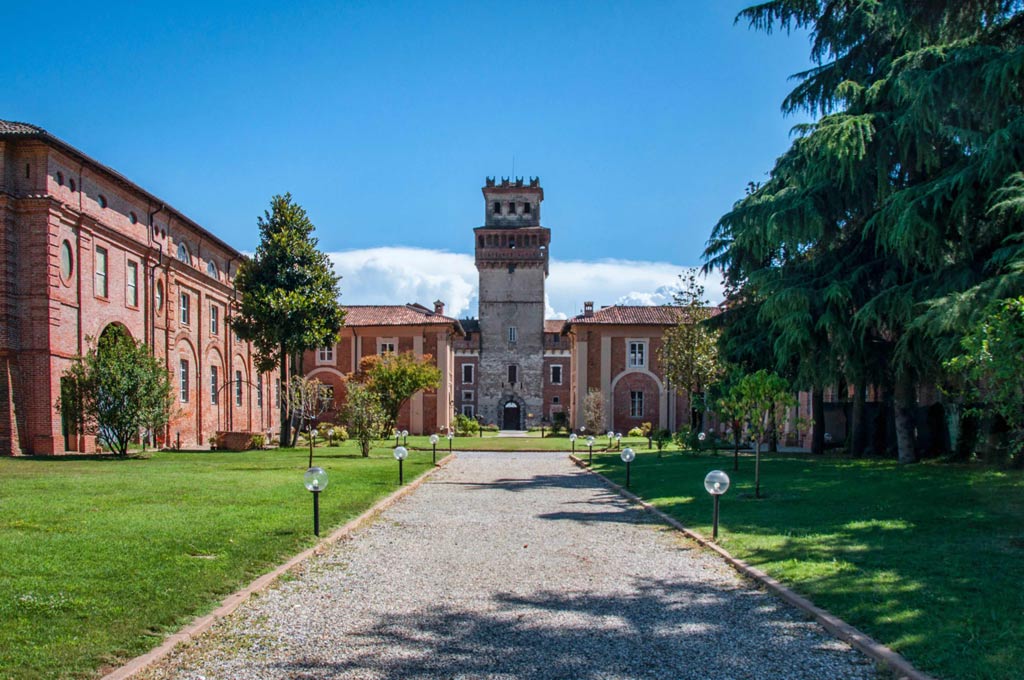
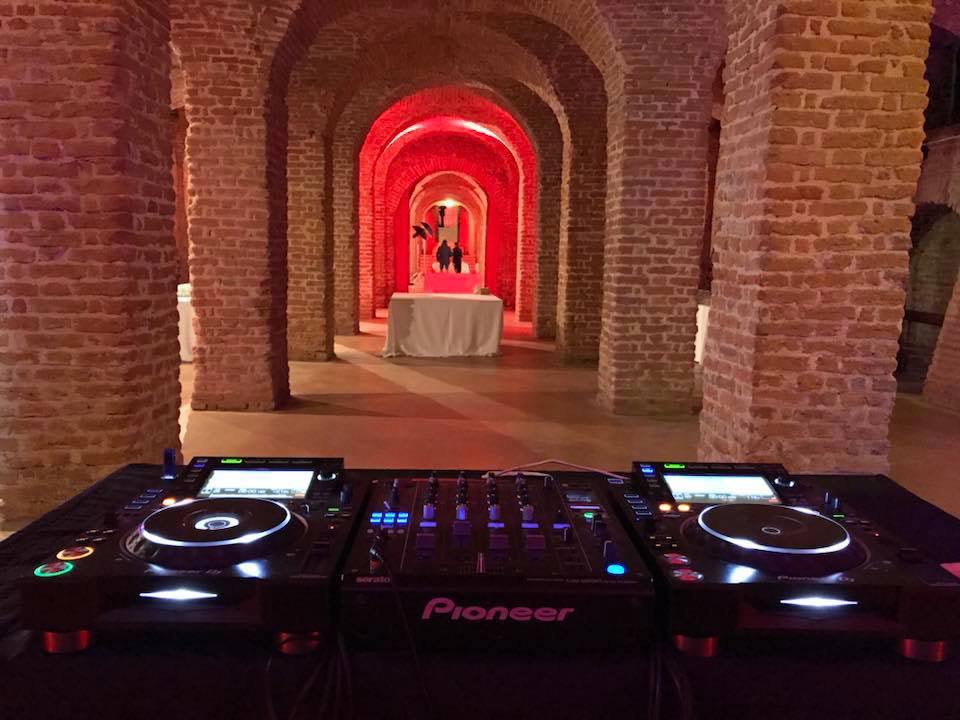
Known as the ‘Versailles of Lombardy’, Castello di Chignolo Po is a splendid 18th-century patrician residence, a veritable living museum of art and tradition, which is an important and precious testimony of the opulent world of Lombard and Venetian nobility. The scenic Baroque courtyard, the large frescoed halls in the style of the Tiepolo school, the elegance of the stucco work and decorations, the dominant tower with its massive turreted structure, all immersed in a gentle rural setting, make this monument one of the most important historical residences in Italy.
The history of Castello di Chignolo, the ‘Versailles of Lombardy’
The oldest part of the Castle, which was originally built as a fortress on high ground, is its imposing Tower, from which a long stretch of the Po River (Cuneulus super Padum) was controlled. It is believed to have been commissioned by King Liutprand around 740 A.D., when Pavia was the capital of the Lombards. Its purpose was to serve as a defensive fortress and a garrison for the defence of the Po River and the Via di Monte Bordone, which subsequently came to be known as the Via Francigena-Romea, which connected Northern Europe with Rome and was the famous pilgrim route.
Just outside the fortress to the north rose a small fortified hamlet or Ricetto, which formed part of the Castle and was completely rebuilt in 1600. It consists of a complex of buildings whose entrance is protected by a moat, two watchtowers and four defensive towers or turrets set outside the walls on the hamlet’s far sides.
Starting from the 13th century, the Castle quickly became one of the most important Lombard fiefdoms. It was initially ruled over by the Pusterla family until 1340, when they became involved in a conspiracy against the Visconti family and were mercilessly exterminated. They were followed by the Federici and the Cusani families, who greatly increased the power wielded by the Castle, receiving an ongoing stream of privileges and concessions from the Kings and the Dukes of Milan.
Between 1700 and 1730, the Castle was enlarged and transformed from a Medieval fortress into a true 18th-century Palace, which was to host popes, emperors, kings, princes and archdukes. Artists from the school of Tiepolo were entrusted with the creation of the stuccoes and paintings that adorn the representative halls in the residence destined for receiving and entertaining guests. The work was commissioned and financed by the property’s then owner, Cardinal Agostino Cusani Visconti (1655 – 1730), who served as the Pope’s Ambassador to the Republic of Venice and at the Court of Louis XIV in Paris, as well as the Bishop of Pavia.
As a result of this magnificent work, Castello di Chignolo Po became known worldwide as “the Versailles of Lombardy”.
Guided visits of the monumental complex of Castello di Chignolo Pò and its park
The Castle and Park are open on Saturdays, Sundays and Bank Holidays from 10 a.m. to 1 p.m. and from 2 p.m. to 7 p.m. To visit on the other days of the week, there must be at least 25 participants and reservations must be made comunicate at least 48 hours in advance.
The visits are exclusively by guided tour and are conducted continuously (every 30 minutes) to ensure better organisation and to accommodate the maximum allowed capacity.
The Baroque Tour enables visitors to admire the ‘Palazzina di Caccia’ hunting lodge, the park with its terraces, the eastern and western gazebos, the monumental staircase, the majestic Baroque façade, the courtyard of honour, the private chapel, rooms containing frescoes and stuccoes from the Tiepolesque school, the historical library, the old kitchen, the pantries and the moat walkway.
 Co-Working
Co-Working
 Film sets
Film sets
 Gardens
Gardens
 Parks
Parks
 Pet Friendly
Pet Friendly
 Private events
Private events
 Residences
Residences
 Visits
Visits
 Weddings
Weddings
 Cultural tourism
Cultural tourism  Cyclotourism
Cyclotourism  Excursions
Excursions  Gardens
Gardens  Hiking
Hiking  Historic Homes open to visitors
Historic Homes open to visitors  Nature
Nature  Restaurants
Restaurants  Sports
Sports  Walking itineraries
Walking itineraries  Wine tourism
Wine tourism Nessun appartamento configurato per questa dimora o la visualizzazione degli appartamenti non è attiva.